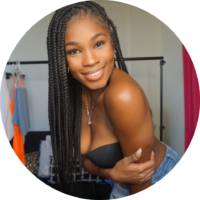Everyone is into dry-brushing…but here’s why
Lately I have gotten really into dry skin brushing. Why? Well, I heard that you can dry-brush when pregnant. Now there are sooo many things that you can’t do when pregnant, aka basically everything, so I thought to myself, if this is something that is allowed, well then I’m going to do it! I’ve always been an obsessive exfoliator, and while I’ll always continue with that routine, I have made time, at least once a week, for this slightly more holistic treatment.
Important note for those who are expecting: get the OK from your doctor first before dry-brushing. Also make sure to be extra gentle, especially around the stomach. Use very light strokes or avoid the stomach area completely if it feels uncomfortable.
What is dry-brushing?
Dry skin brushing is one of the most natural, effective and inexpensive methods for reducing cellulite and promoting healthy, glowy skin. It buffs away dead skin, boosts circulation and lymphatic drainage and rids the body of toxins. Interested? Uh, who wouldn’t be.
I spoke with Joanna Vargas, New York City based esthetician, celeb facialist (clients like Michelle Williams and Rachel Weisz, NBD) and skin care expert, for the low-down on dry brushing.
Why: “The main purpose of dry brushing is to stimulate collagen production, which will help thicken the skin and lessen the appearance of cellulite. It also increases blood flow to the skin, and helps the lymphatic system release toxins by aiding digestion and kidney function. It also dramatically increases elasticity, so it’s great for lifting and toning problem areas. Results usually appear within the first two weeks!”
How often: “Dry brushing every day on heels, elbows and knees considerably improves their texture. Dry brushing immediately increases circulation, so you will feel warmer when you are done—perfect for winter! Try it before you get into the shower in the morning and you will see a difference in your skin quality and cellulite in days. But you can also just attempt to do this once a week.”
Type of Brush: “Look for a course bristled brush. The bristles should be natural, not synthetic, and preferably vegetable-derived. Find a brush with an attached handle for hard to reach spots.”
Direction: “Start at the tops of the feet and brush upwards towards the heart, making long sweeps, avoiding an overly harsh back and forth motion. Start at your feet, moving up the legs on both sides, then work from the arms toward your chest. On your stomach, direct the brush counterclockwise. Spend extra time on areas that tend to be more stagnant, like the inner thigh, and don’t forget to include the backs of the arms and your back.”
Post brushing: “I like to follow with a nice body butter containing Shea and Cocoa Butter, especially in the winter for ultimate softness and hydration.”
Thanks Joanna for your incredible insight! I recommend this brush from Cap Beauty and clean body butters by Tata Harper, Earth Tu Face and Susanne Kaufmann.

